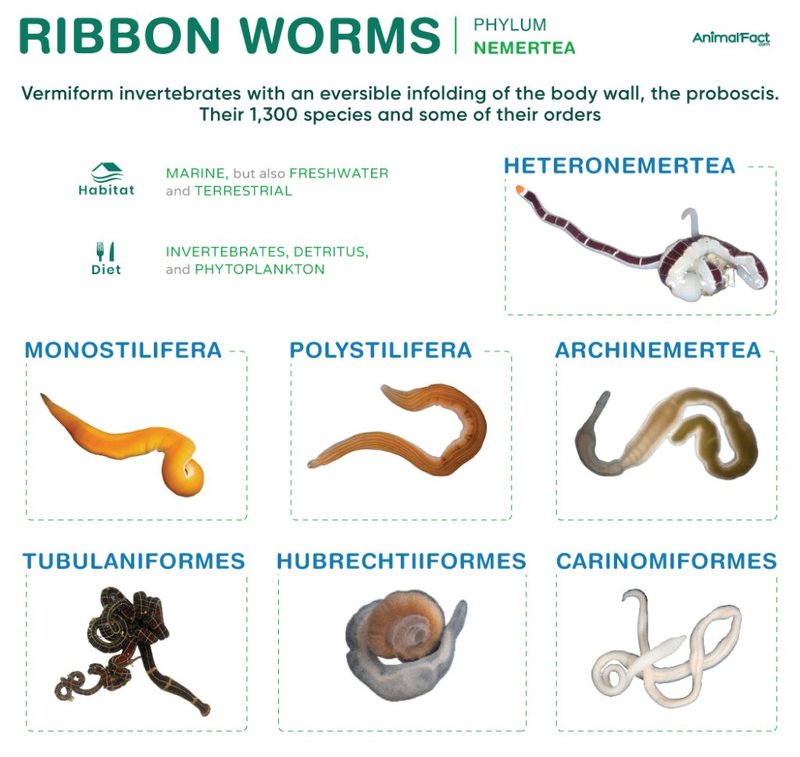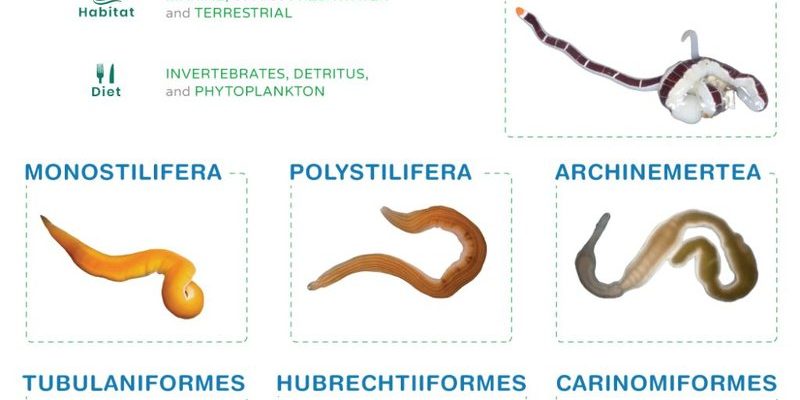
Ribbon worms are part of the phylum Nemertea, which houses a variety of species, each with its quirks. While you might expect most worms to lack complex sensory organs, ribbon worms surprise us a bit. They have some interesting adaptations that help them navigate their watery homes, even if they don’t quite have eyes like we do. Let’s dive in and explore what ribbon worms really use to sense their surroundings.
What Are Ribbon Worms?
First, let’s get to know ribbon worms a little better. These creatures can be found in various marine environments, from the shores of the Atlantic to the depths of the Pacific. They often have elongated, soft bodies, and some can grow surprisingly long—up to 30 meters! Yes, you read that right. Imagine a worm that could stretch across an entire room!
Ribbon worms come in different colors and shapes, which can help them blend into their environments or warn predators. But it’s not just their appearance that makes them fascinating. They also have a unique feeding system: they use a long, retractable proboscis to capture prey, which can include small fish and crustaceans. This handy tool is critical for their survival, as it helps them snag meals from their surroundings.
Do Ribbon Worms Have Eyes?
Here’s the big question: do ribbon worms have eyes? The short answer is: not really. Ribbon worms lack true eyes like those we see in vertebrates. Instead, they have simple light-sensitive cells that can help them detect changes in light. This ability is crucial for survival, as it allows them to sense the presence of predators or changes in their environment.
These cells are scattered throughout their bodies, primarily in the head region. You might think of them as tiny sensors that help the worm perceive its surroundings. While they won’t win any beauty contests compared to a pair of peepers, these adaptations are quite effective for a creature living underwater.
Sensory Organs of Ribbon Worms
Now, let’s explore what ribbon worms do have in terms of sensory organs. Aside from their light-sensitive cells, ribbon worms possess various other receptors that help them sense their environment. These include:
- Chemoreceptors: These specialized cells help ribbon worms detect chemicals in the water, which can indicate food sources or danger.
- Tactile receptors: These allow them to feel touch and vibrations, helping them navigate through their habitats.
- Statocysts: These are balance-sensitive organs that help them maintain their orientation in the water.
Together, these sensory adaptations help ribbon worms interact with their environment effectively, even without traditional eyes. They might not have the advanced sight that many other creatures possess, but they’ve adapted beautifully to their underwater world.
How Do Ribbon Worms Sense Their Environment?
You might wonder how ribbon worms use these sensory organs in their daily lives. Their chemoreceptors are a game-changer. Imagine walking into a room and instantly smelling something delicious—that’s how ribbon worms can find food through chemical signals in the water. These receptors allow them to “taste” their surroundings, guiding them toward potential meals.
Tactile receptors play an equally important role. When a ribbon worm swims through the water, it can feel changes in the currents. This is crucial for avoiding predators or locating a safe hiding spot. Picture a swimmer who can feel the waves change direction—this ability helps ribbon worms navigate without the need for sharp vision.
Statocysts, which maintain balance, are vital for these lengthy creatures. By detecting their position in the water, ribbon worms can control their movements and avoid getting tangled up in seaweed or other obstacles. This balance is essential, especially when they’re trying to catch prey or escape predators.
The Importance of Sense Organs in Survival
The adaptations of ribbon worms show us how incredible nature can be. While they may lack true eyes, their unique sensory organs are perfectly suited to their environment. In the underwater world, where light may not always penetrate, these adaptations ensure their survival.
By relying on chemoreception, touch, and balance, ribbon worms can thrive in their marine habitats. This versatility allows them to be both effective hunters and adept at avoiding danger. It’s a beautiful example of how life can flourish in various forms, adapting to the specific needs of each organism.
Comparing Ribbon Worms to Other Invertebrates
When you start to think about sensory organs in the animal kingdom, it’s interesting to compare ribbon worms to other invertebrates. For instance, some mollusks, like octopuses, have complex eyes that allow them to see in detail. Contrast this with ribbon worms, which have a much simpler system.
Another comparison can be made with earthworms. Earthworms do have light-sensitive spots, but they also lack the advanced sensory abilities found in ribbon worms. Each group has adapted to its environment in different ways, reflecting the diverse strategies life has developed on Earth.
The Future of Ribbon Worm Research
Scientists are still exploring the world of ribbon worms and their fascinating adaptations. Understanding how these organisms use their sensory organs can give us insights into marine ecosystems and the evolutionary pathways of invertebrates. As research continues, we may uncover even more about how these unique creatures navigate their underwater world.
Studying ribbon worms also has implications for understanding environmental changes. Since they are sensitive to pollutants and alterations in their habitats, they can serve as indicators of ecosystem health. Learning about their sensory mechanisms might help us protect marine environments better.
In conclusion, even though ribbon worms don’t have traditional eyes, they have developed remarkable adaptations to sense the world around them. Their chemoreceptors, tactile receptors, and statocysts help them navigate and survive in their underwater habitats. Just because they lack advanced eyes doesn’t mean they aren’t expertly equipped for their lives. Nature always finds a way to amaze us!

